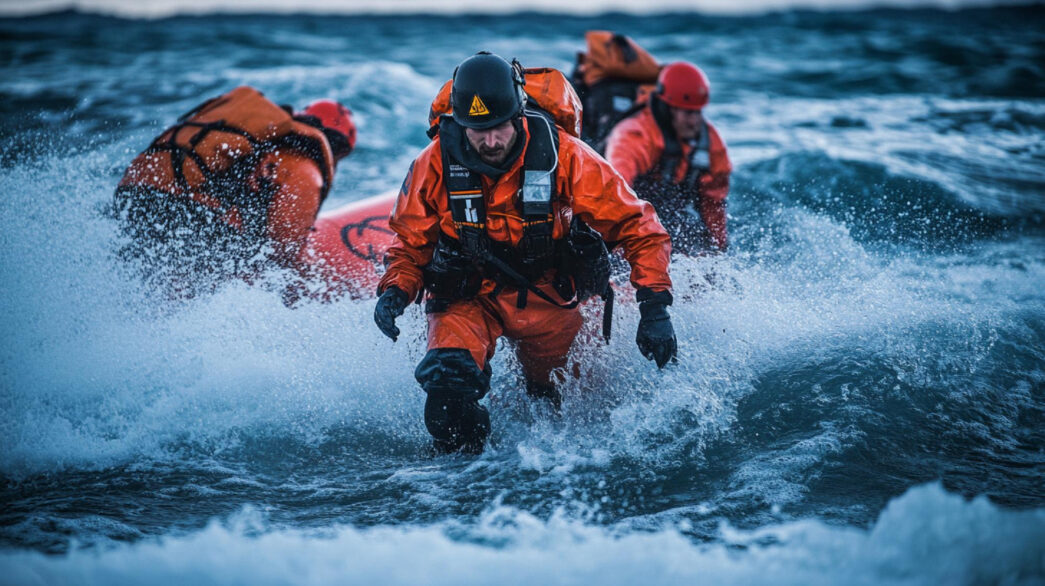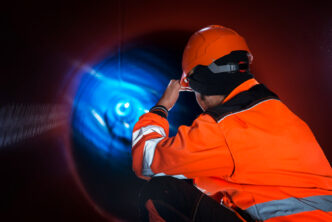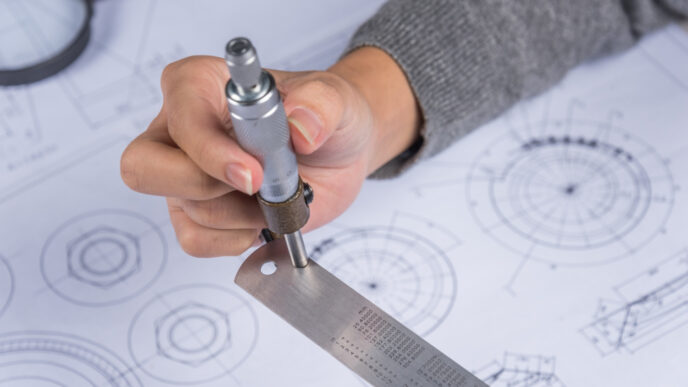Technical Name: ADVANCED SEA RESCUE TRAINING COURSE – TAUGHT IN ENGLISH
Reference:
We provide courses and training; We perform Translations and Versions in Technical Language: Portuguese, English, Spanish, French, Italian, Mandarin, German, Russian, Swedish, Dutch, Hindi, Japanese and others consult.
What is the objective of the Man Overboard Rescue Course?
The Sea Rescue Course in English is designed to train professionals capable of performing technical rescue operations in open sea environments, with proficiency in international communication, rapid decision-making under pressure, and mastery of advanced rescue techniques. The focus is on coordinated action with multinational forces, employing procedures aligned with SAR (Search and Rescue) missions, maritime medical evacuation, and response to natural or industrial disasters in oceanic environments.
Furthermore, the Sea Rescue Course in English fosters a high level of operational awareness, where the professional learns to act not only based on manuals, but also through subtle field perception, refined spatial awareness, and immediate adaptability to the unexpected, essential attributes for navigating unpredictable maritime scenarios.
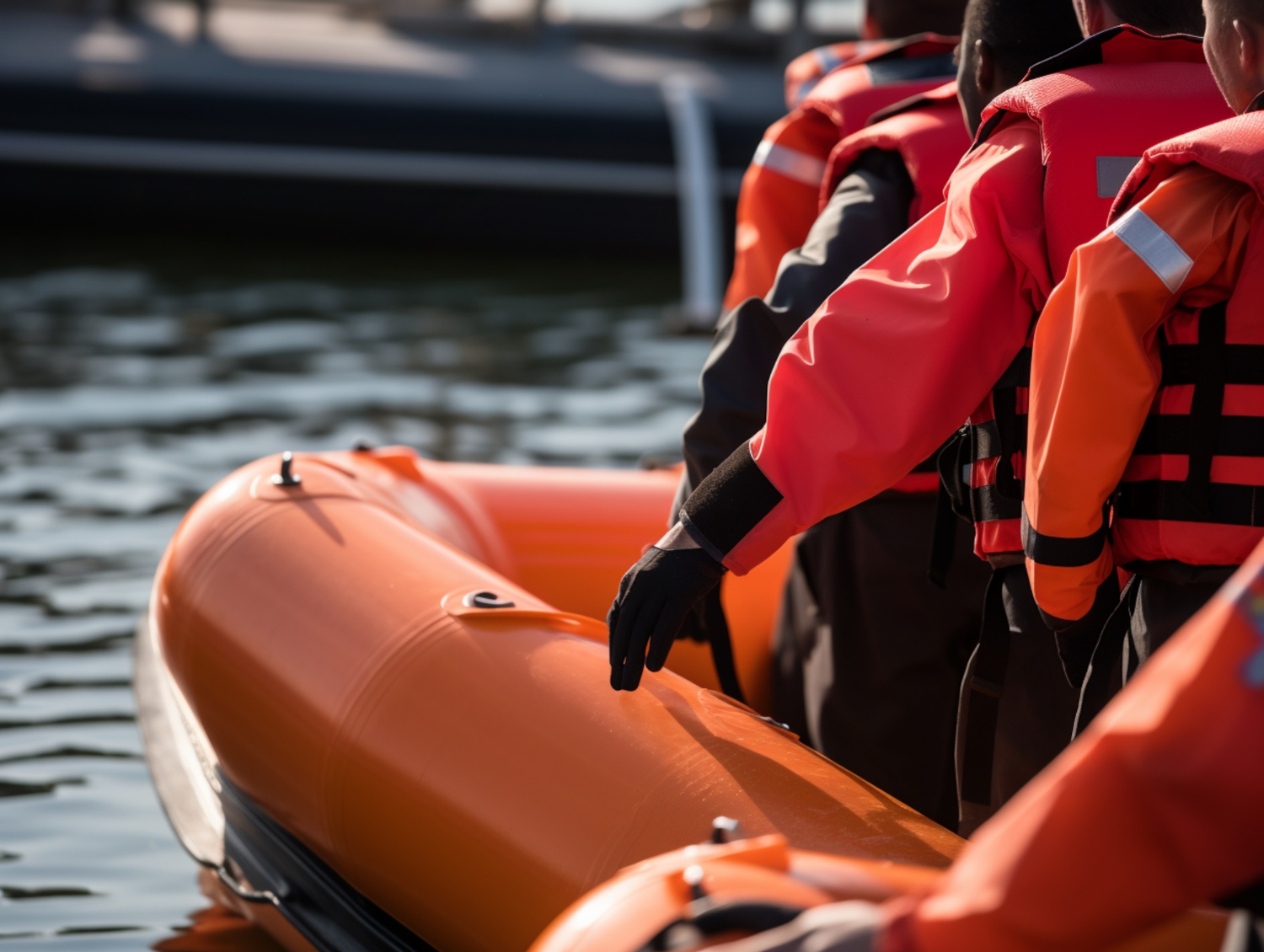
What limiting factors impact communication between the aquatic rescue team and medical support services during simultaneous operations?
In simultaneous operations involving aquatic rescue and pre-hospital care (PHC), communication may collapse due to multiple factors:
Intense environmental noise: waves, propellers, wind, and vessel movement saturate auditory channels and hinder active listening.
Lack of integrated protocols between maritime operators and medical teams: misaligned terminology, distinct jargon, and absence of standardized signaling.
VHF/UHF channel saturation: in missions with multiple fronts, the loss of channel priority may silence critical requests.
Leadership misalignment in the operational theater: failures in the decision-making hierarchy lead to command redundancy or, worse, action omission.
The course guides students in prior channel mapping, standardization of verbal and non-verbal codes, and the strengthening of tactical presence through silence—where the operator’s clear intention prevents communication collapse even in extreme environments.
Man Overboard Rescue Course: How should risk management in open sea be adjusted in the face of sudden changes in wind, tide, and visibility?
Risk management in open sea must be dynamic, continuous, and responsive to abrupt environmental changes. Initially, it is essential to establish a tactical action plan based on meteorological analysis, tidal reading, and visibility monitoring. However, this plan must include flexible operational margins, allowing quick adaptation without compromising team safety.
As sudden variations in wind, tide, or visibility occur, the responsible operator must immediately reassess access zones, evacuation points, and withdrawal routes. In addition, it is necessary to redefine operational limits for vessels and, if needed, temporarily suspend the mission to ensure the integrity of those involved. Finally, decision-making must consider not only technical data but also the situational awareness of the team—a decisive element when reaction time is critical.
What are the decision-making protocols for choosing between rescue boards, torpedo buoys, or support boats in a multiprofessional rescue scenario?
| Real Scenario | Recommended Rescue Tool |
|---|---|
| Conscious victim at close range | Torpedo buoy with safe approach |
| Unstable victim at risk of drowning | Rigid board with lateral immobilization |
| Rough sea with multiple victims | Inflatable boat with lowered freeboard |
| Victim with suspected trauma or hypothermia | Vessel with integrated PHC team |
The technical decision is based on five concurrent variables: distance, victim stability, sea conditions, available resources, and response time. Thus, the operator must train their perception to detect which tool resonates with the scenario, acting with surgical precision.
Man Overboard Rescue Course: When does jet-ski intervention become unfeasible and require tactical replacement with an inflatable boat in operations involving unstable victims?
Although effective in fast maneuvers, the jet-ski presents critical operational limitations in specific scenarios. Therefore, identifying the right time for replacement prevents tactical failures and enhances mission safety.
The jet-ski becomes a liability when:
Wave height exceeds 1.5 meters, reducing stability and maneuvering capacity.
The victim requires full immobilization (e.g., trauma or unconsciousness).
There are multiple victims on board or medical equipment must be transported.
Fuel autonomy does not ensure a safe return with additional load.
The inflatable boat, with low-turbulence propulsion and assisted evacuation capacity, becomes the most viable tool. Accordingly, the course teaches operators how to detect with precision the technical transition point between speed and stability, where insisting on the jet-ski becomes operational ego rather than tactical efficiency.
How to identify and respond correctly to secondary aquatic panic signs during the approach of conscious victims?
Secondary panic undermines safe approach, even when the victim is conscious. Therefore, quickly identifying the signs and responding with technical skill and emotional stability is essential to reduce operational risk.
Typical behavioral signs:
Attempts to grab the rescuer
Accelerated breathing and dissociated gaze
Rejection of assistance or flotation device
Recommended technical response:
Lateral and non-invasive approach
Firm voice and clear, concise commands
Calm gestures and stabilizing posture
Throughout the course, the operator develops the ability to act with technical control and conscious presence, restoring the victim’s trust without direct confrontation. At this point, physical competence merges with emotional intelligence, creating true operational leadership in critical environments.
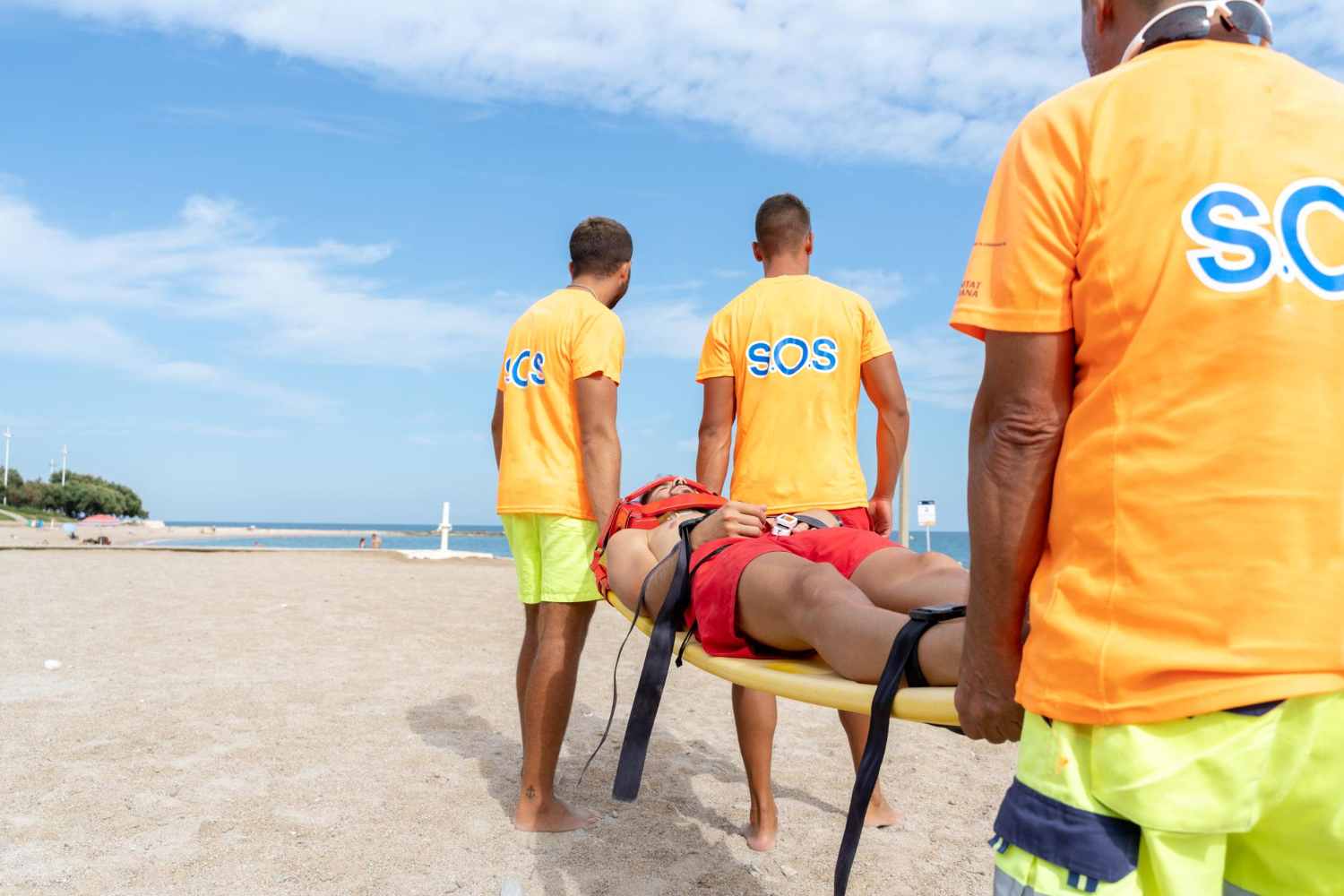
Man Overboard Rescue Course: How can synchronization between the team in operational silence generate fluidity in actions even without verbal commands?
Operational fluidity in maritime rescues does not depend exclusively on verbal commands. Thus, highly trained teams achieve excellence through silent synchronization, based on pre-established protocols and expanded field perception.
To accomplish this, they use choreographed gestures, minimal visual signals, and integrated tactical routines. Furthermore, there is a nonverbal alignment in which each member intuitively recognizes the team’s next move. As a result, the group operates as a cohesive unit, reducing errors, accelerating decisions, and increasing mission efficiency, even under extreme pressure.
Would you entrust a critical rescue to someone who has never trained with multiple victims in rough seas?
Practice in controlled environments does not prepare anyone for the real collapse of an open-sea operation. Therefore, in situations involving multiple victims, decision-making time compresses, the sea becomes unpredictable, and chaos demands absolute technical mastery.
Without specific training, the operator will not know how to prioritize care, maintain personal buoyancy under emotional and physical load, or coordinate evacuation with boat support. Thus, rescuing lives without technical preparation in multi-victim scenarios is more than negligence, it is an operational risk assumed without foundation.
Click the Link: Criteria for Certificate Issuance According to Standards
See Also:
Curso Resgate Homem ao Mar
Laudo Guindaste Marítimo
Curso NORMAN-01/DPC Marinha
Certificado de conclusão
Curso Resgate ao Mar em Inglês
Curso Resgate ao Mar em Inglês
Curso Resgate ao Mar em Inglês
Inexperienced Participants:
Minimum credit hours = 80 hours/class
Experienced Participants:
Minimum credit hours = 40 hours/class
Update (Recycling):
Minimum credit hours = 20 hours/class
Updating (Recycling): The employer must conduct periodic training Annually and whenever any of the following situations occur:
a) change in work procedures, conditions or operations;
b) event that indicates the need for new training;
c) return from work leave for a period exceeding ninety days;
d) change of company;
e) Exchange of machine or equipment.
Curso Resgate ao Mar em Inglês
Curso Resgate ao Mar em Inglês
Normative references when applicable to applicable devices and their updates:
NR 01 – Disposições Gerais e Gerenciamento de Riscos Ocupacionais – (General Provisions and Occupational Risk Management);
NR 06 – Equipamento de Proteção Individual – EPI – (Personal Protective Equipment – PPE);
NR 21 – Trabalhos a Céu Aberto – (Open Pit Works);
NR 26 – Sinalização de Segurança – (Safety Signs);
NR 29 – Segurança e Saúde do Trabalho Portuário – (Safety and Health in Port Work);
ABNT NBR 16710-1 Resgate técnico industrial em altura e/ou em espaço confinado – Parte 1: Requisitos para a qualificação do profissional – (Industrial technical rescue at height and/or in confined space – Part 1: Professional qualification requirements);
ABNT NBR 16710-2 Resgate Técnico Industrial em Altura e/ou em Espaço Confinado – Parte 2 Requisitos para provedores de Treinamento e Instrutores para qualificação Profissional – (Industrial Technical Rescue at Height and/or Confined Space – Part 2 Requirements for Training Providers and Instructors for Professional Qualification);
ABNT NBR 15475 – Qualificação dos Profissionais Acessos por Corda – (Qualification of Rope Access Professionals);
NFPA 1006 – Norma para Qualificação de Técnicos Profissionais de Resgate – (Standard for Qualification of Professional Rescue Technicians);
NFPA 1670 – Norma para Treinamentos e Operações Técnicas de Busca e Resgate em Incidentes – (Standard for Incident Search and Rescue Technical Training and Operations);
Protocol – Guidelines American Heart Association;
ISO 10015 – Gestão da qualidade – Diretrizes para treinamento – (Quality Management – Training Guidelines);
ISO 45001 – Sistemas de gestão de saúde e segurança ocupacional – Requisitos com orientação para uso – (Occupational health and safety management systems – Requirements with guidance for use).
Note: This Service exclusively meets the requirements of the MTE (Ministry of Labor and Employment) when it comes to serving other bodies, inform when requesting.
Curso Resgate ao Mar em Inglês
Curso Resgate ao Mar em Inglês
Our pedagogical project follows the guidelines imposed by Regulatory Standard nº1.
After payment is made, Purchase Order, Contract signed between the parties, or other form of closing confirmation, the teaching material will be released within 72 working hours (up to 9 days), due to the adaptation of the syllabus and compliance with the Standards Techniques applicable to the scenario expressed by the Contracting Party; as well as other adaptations to the didactic material, carried out by our Multidisciplinary Team for technical language according to the student’s nationality and Technical Operational and Maintenance Instruction Manuals specific to the activities that will be carried out.
Attention: The Course teaches how to Apply the normative concepts of the standard, which enables you to sign Projects, Reports, Expertise etc. these are the attributions that the (a) Legally Qualified Professional has with their Class Council, such as CREA.
This course aims to study situations where it will be necessary to apply: Concepts and Calculations according to relevant Standards and does not replace the analysis and responsibility on the part of each professional accredited by CREA or other Class Councils in the most varied situations, where makes it imperative to respect the conservation conditions of the equipment, periodic checking of the instruments, such as respect for the primary capacity predetermined by the PPE manufacturers, among others based on the corresponding Standards.
OTHER ELEMENTS WHEN APPLICABLE AND CONTRACTED:
Concept of terms and definitions;
Drowning prevention;
Risk prevention in work at heights NR 35;
Recognition of signs;
Practical rescue training;
Respiratory system analysis;
Types of accidents in liquid media;
Definition of immersion syndrome;
Recognition of hypothermia and drowning;
Distress and Panic Characteristics;
Submersion check;
Drowning degrees and treatments;
Awareness of risks when working near the sea;
Use of EPI and EPC to work close to the liquid medium;
Identification and handling of chemicals;
Action plan in case of accident (man overboard);
Communication systems;
Man Overboard Rescue Course:
Accidents involving chemical products;
Prevention of accidents in embarkation and disembarkation.
Minimum Requirements: Man Overboard Rescue Course
EPI, EPC, and rescue structure as recommended by the Navy Standards, are on behalf of the Contracting Party;
Certificate from Participants of good physical and mental health conditions within 90 days;
Access the life raft from the water, using a life jacket;
Concentration at the meeting point;
Overturn inflatable raft in the water;
Swim 15 meters without a life jacket and with a life jacket;
Jump from platform with life jacket height 3 meters;
Keep afloat for 10 minutes;
Activity Complements:
Awareness of Importance:
APR (Preliminary Risk Analysis);
PAE (Emergency Action Plan;
PGR (Risk Management Plan);
Understanding the need for the Rescue Team;
The importance of knowledge of the task;
Accident prevention and first aid notions;
Fire protection;
Perception of risks and factors that affect people’s perceptions;
Impact and behavioral factors on safety;
Fear factor;
How to find the fastest and easiest way to develop Skills;
How to control the mind while working;
How to administer and manage working time;
Why balance energy during activity in order to obtain productivity;
Consequences of Habituation of Risk;
Work accident causes;
Notions about the Tree of Causes;
Notions about Fault Tree;
Understanding Ergonomics;
Job Analysis;
Ergonomic Hazards;
Hazard Communication Standard (HCS) – OSHA;
Practical exercises:
Registration of Evidence;
Theoretical and Practical Assessment;
Certificate of participation.
Curso Resgate ao Mar em Inglês
Learn More: Curso Resgate ao Mar em Inglês:
29.5.2 Para o resgate de acidentado em embarcações atracadas devem ser mantidas, próximas a estes locais de trabalho, gaiolas e macas em bom estado de conservação e higiene, não podendo ser utilizadas para outros fins. (Alterado pela Portaria MTE n.º 1.895, de 09 de dezembro de 2013)
29.5.3 Nos trabalhos executados em embarcações ao largo deve ser garantida comunicação eficiente e meios para, em caso de acidente, prover a rápida remoção do acidentado, devendo os primeiros socorros serem prestados por trabalhador treinado para este fim.
29.5.4 No caso de acidente a bordo em que haja morte, perda de membro, função orgânica ou prejuízo de grande monta, o responsável pela embarcação deve comunicar, imediatamente, à Capitania dos Portos, suas Delegacias e Agências e ao órgão regional do MTE.
29.5.4.1 O local do acidente deve ser isolado, estando a embarcação impedida de suspender (zarpar) até que seja realizada a investigação do acidente por especialistas desses órgãos e posterior liberação do despacho da embarcação pela Capitania dos Portos, suas Delegacias ou Agência.
29.5.4.2 Estando em condições de navegabilidade e não trazendo prejuízos aos trabalhos de investigação do acidente e a critério da Capitania dos Portos, suas Delegacias e Agências, o navio poderá ser autorizado.
Fonte: NR 29.
29.5.2 For the rescue of an injured person on berthed vessels, cages and stretchers must be kept in a good state of conservation and hygiene, close to these workplaces, and may not be used for other purposes. (Amended by MTE Ordinance No. 1,895, of December 9, 2013)
29.5.3 In work carried out on offshore vessels, efficient communication and means must be guaranteed, in the event of an accident, to provide for the rapid removal of the injured person, and first aid must be provided by a worker trained for this purpose.
29.5.4 In the event of an accident on board in which there is death, loss of limb, organic function or major damage, the person responsible for the vessel must immediately notify the Port Authority, its Police Stations and Agencies and the regional body of the MTE .
29.5.4.1 The location of the accident must be isolated, with the vessel prevented from suspending (setting) until the accident investigation is carried out by specialists from these bodies and subsequent release of the vessel’s dispatch by the Port Authority, its Police Stations or Agency.
29.5.4.2 Being in seaworthy conditions and not causing damage to the accident investigation work and at the discretion of the Port Authority, its Police Stations and Agencies, the ship may be authorized.
F: NR 29
01 – URL FOTO: Licensor’s author: Frolopiaton Palm – Freepik.com
02 – URL FOTO: Licensor’s author: Freepik
03 – URL FOTO: Licensor’s author: fotodinero – Freepik.com
Curso Resgate ao Mar em Inglês: Consult-us.

